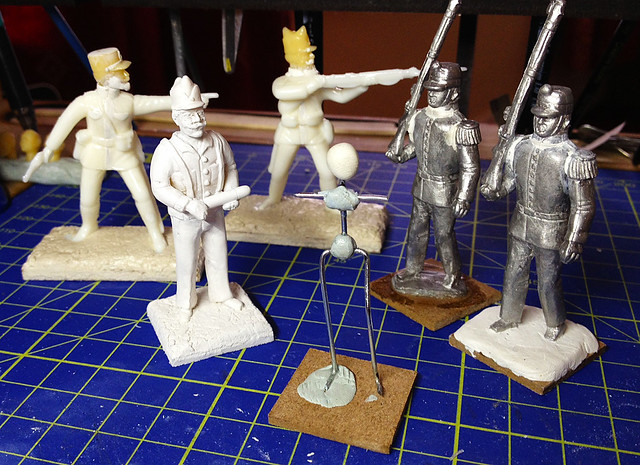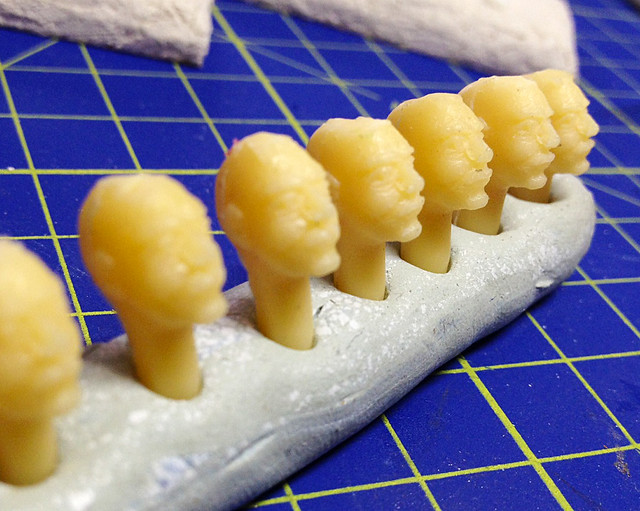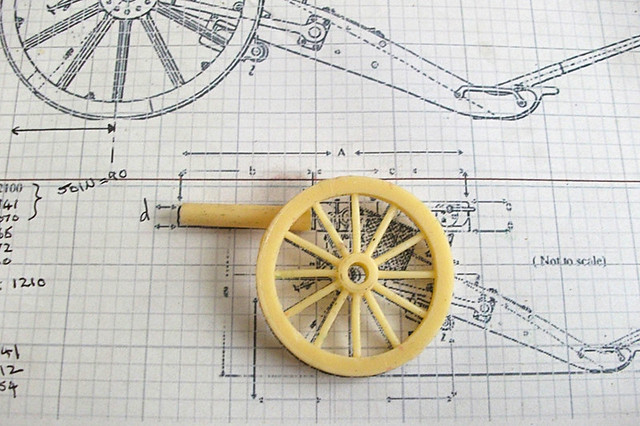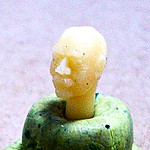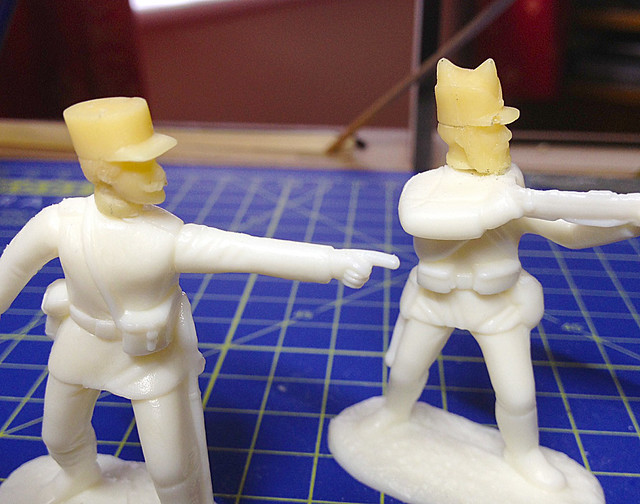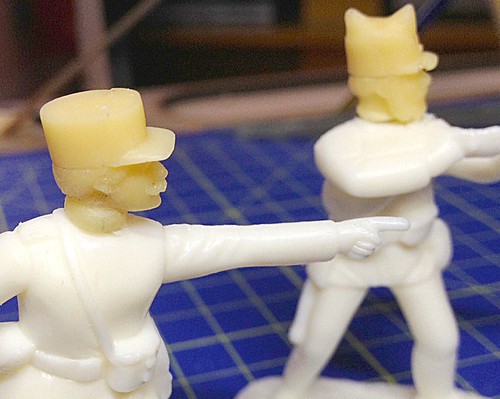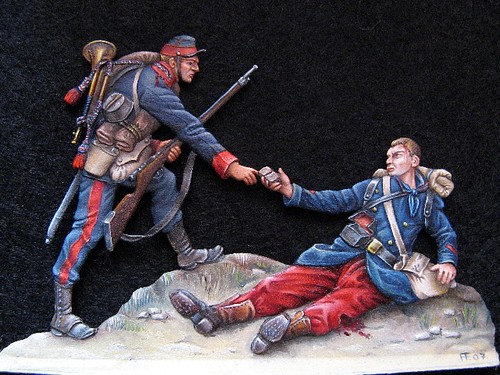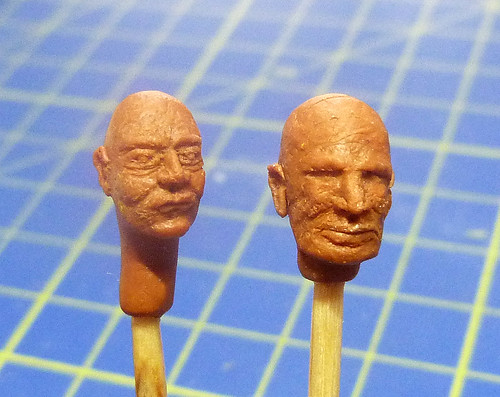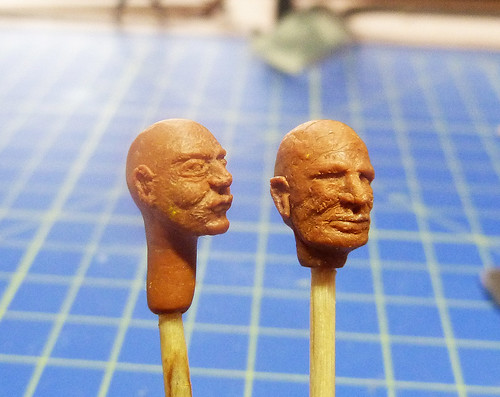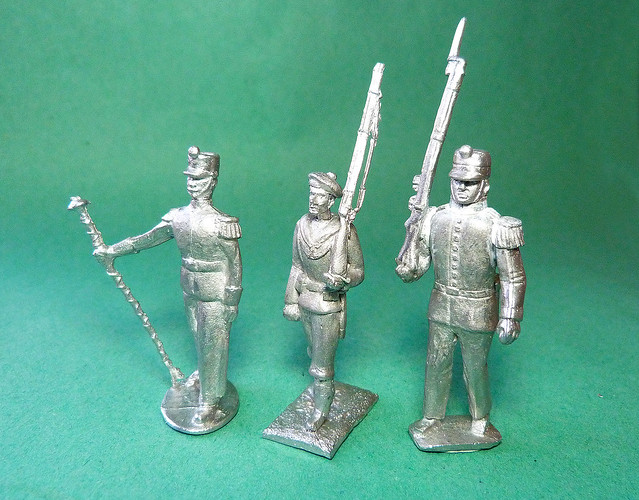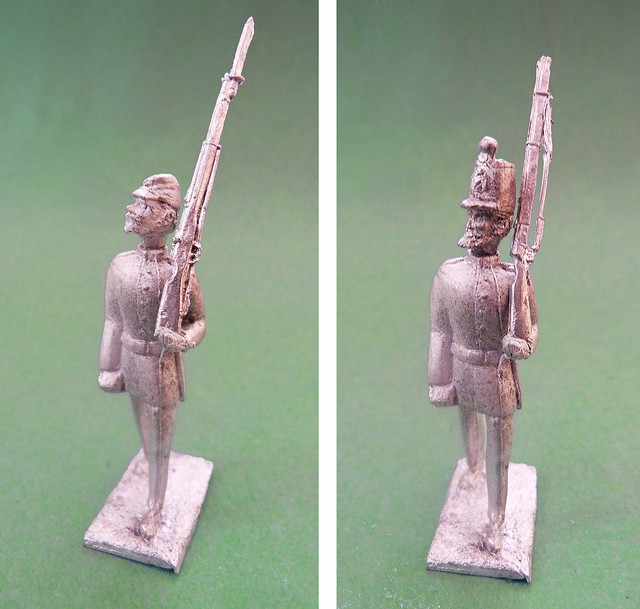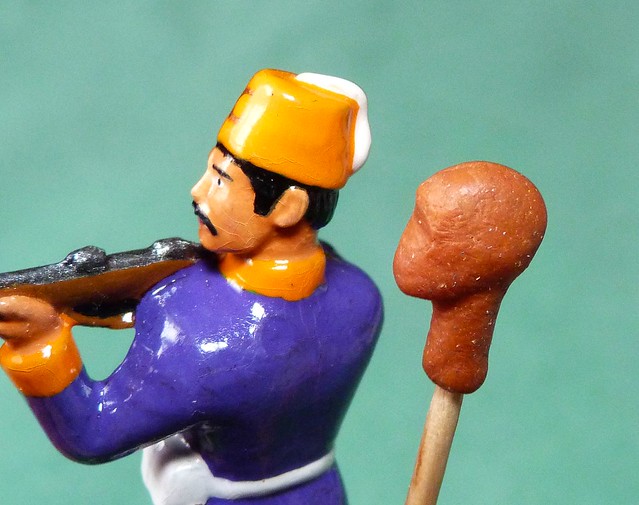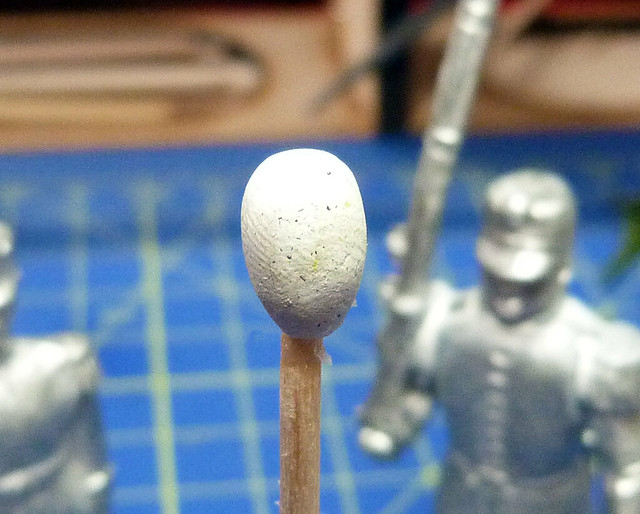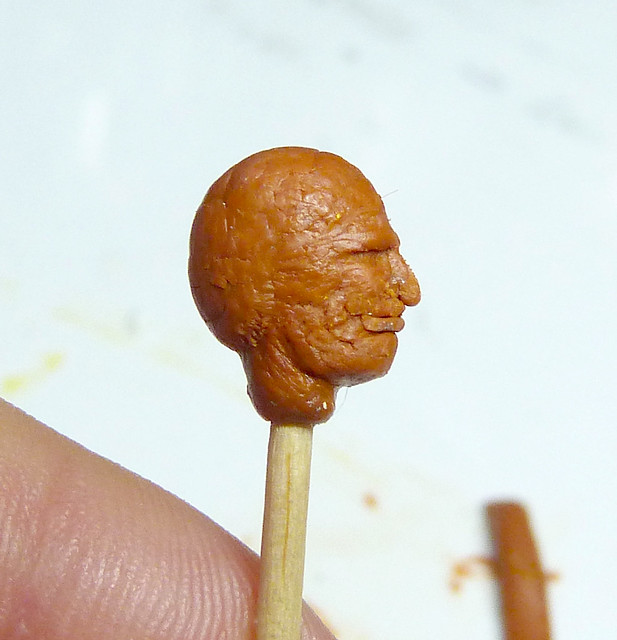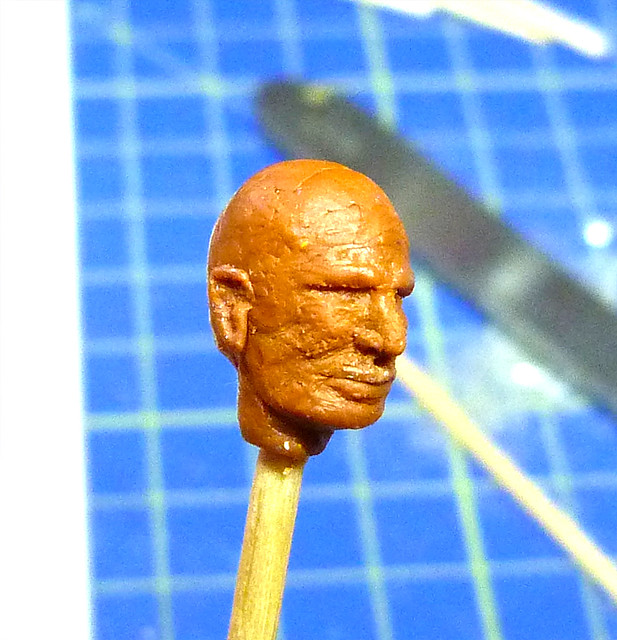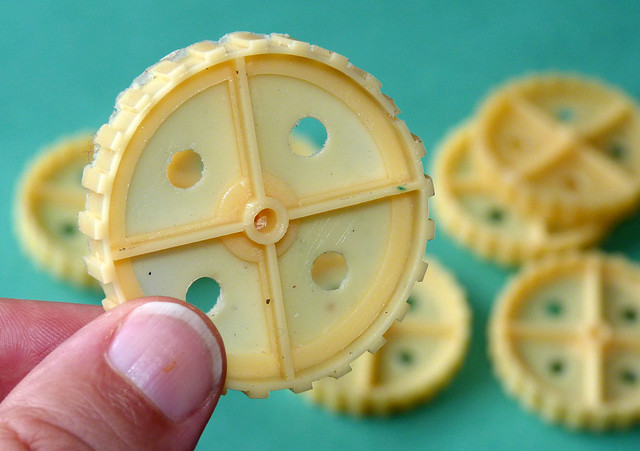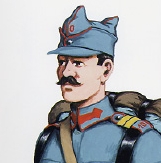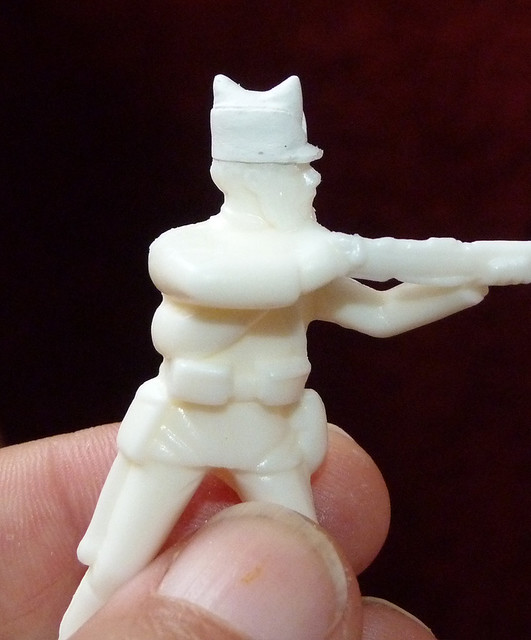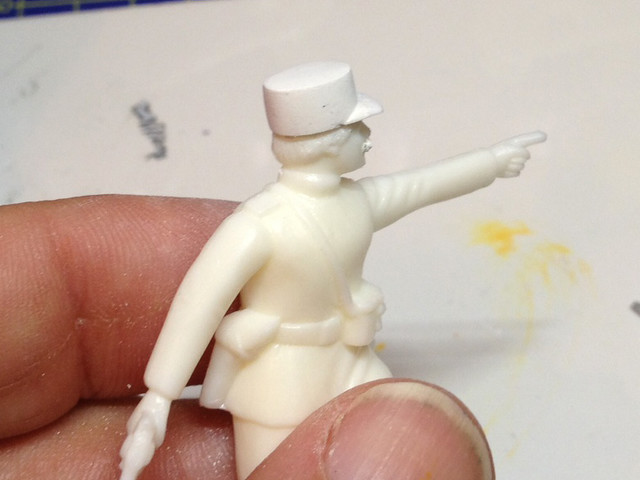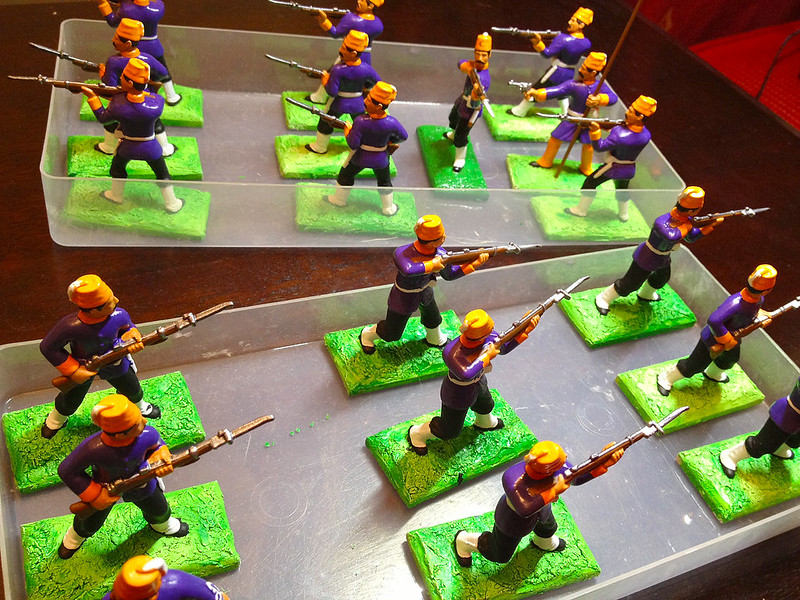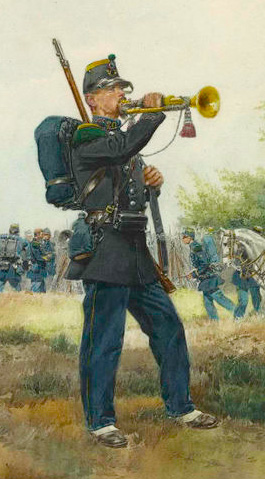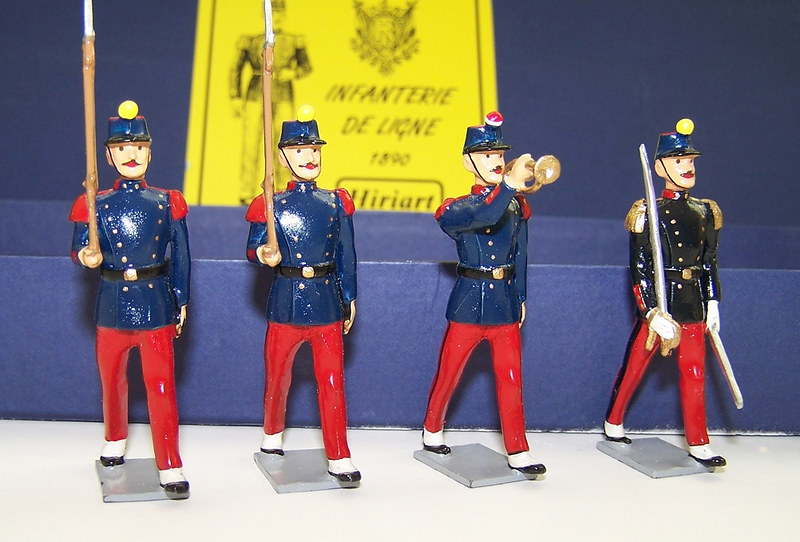Having examined the general quality and components of my new Black Hat French infantry it was time to do a quick bit of research, primarily for the colours I should use to paint the uniforms.
Left: Chasseur a pied. Bugler, full dress (1885). This illustration appeared in L'Armee Française by Jules Richard, illustrated by Édouard Detaille, first published in 1885. Source: Wikipedia
As usual my first port of call was the Osprey web site to see if there was a specific book that covered this unit. The bad news is that there is a bit of a gap in Osprey's inventory for the period of French military history I am interested in (1890/1900). This is due to the fact that Osprey is chiefly concerned with specific conflicts and campaigns.
The most important campaigns close to 1900 that are featured by Osprey's range are, of course, The Franco-Prussian War (1870-71) and then the First World War. There are a couple of books that cover French forces at the turn of the century - notably the Boxer Rebellion and a History of the Foreign Legion from 1872-1914 - but they don't really cover home regiments in any great detail but rather colonial interventions in Africa and Asia.
I am sure there are books somewhere that illustrate the French army during this period but I have a sneaking suspicion that they are probably French publications in French.
However, a search of the internet did net me some very nice historical illustration from my target period and also some photos of other toy soldiers by
Hiriart of the very self-same infantry regiment that Black Hat have modelled.
I am unable to pin down Black Hat's chosen French uniform exactly. Certainly it differs in it's look from the infantry of the line of the late 1890s, specifially in two specific details - the tunic buttons and, importantly, the unique French infantry hat.
Left: Contemporary hand Colored Lithograph from 1889 showing French Infantry of the Line.
To be fair to Black Hat the have neither said that their model is specifically
Infanterie de Ligne, just that they are a rather generic 'French Infantry' and also they do not mention a period for their model.
If you look at French uniforms from 1890 to the beginning of the First World War there is a evolution in both items I mention - tunics did change, in some cases, from double breasted to single breasted, and the 'kepi' hats changed from the early form depicted in the attached plate to a more modern version which we are more familiar with from pictures of the Foreign Legion (more upright).
So, Black Hat's soldier
might be an example which represents French uniforms closer to 1914 than 1900. But is this important - remembering that these are
toy soldiers?
Well, probably not so much although questions about accuracy does make it difficult for you to pin down exactly what colour scheme to paint your soldiers (Black Hat gives no hints). The temptation is to paint your Frenchies a generic colour scheme similar to the pictures above, the Hiriart toy soldiers do seem to accurately depict the historical plate so may be a good template.
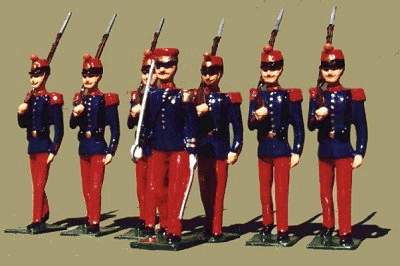 |
The one example of 'a' French uniform that is similar to the Black Hat
depiction is this set of toy soldiers from Soldier Pac. These apparently are
'recast from Britains' and so, I guess, may have been the inspiration for
the Black Hat ones. |
I guess the only way to really know what Black Hat had in mind with their model is to email them and ask them, otherwise - unless you can track down an obscure French reference - you are left guessing!
(One theory I have, looking at the Black Hat range of toy soldiers, is that they have cheated a little bit and used the same generic body for quite a few of their soldiers. They just change the heads (and hats) to depict specific regiments and nations.)
 |
French Infantry Band in Full Dress, 1914. CBG Mignot - European Armies Of
World War One |
 |
Magnificent old Britains French Field Artillery set. I just include this
because it's superb! |
 |
Contemporary Uniform Plates of the French Army 1889 Hand Colored
Lithographs. Click to enlarge. Source: www.warflag.com/ |

